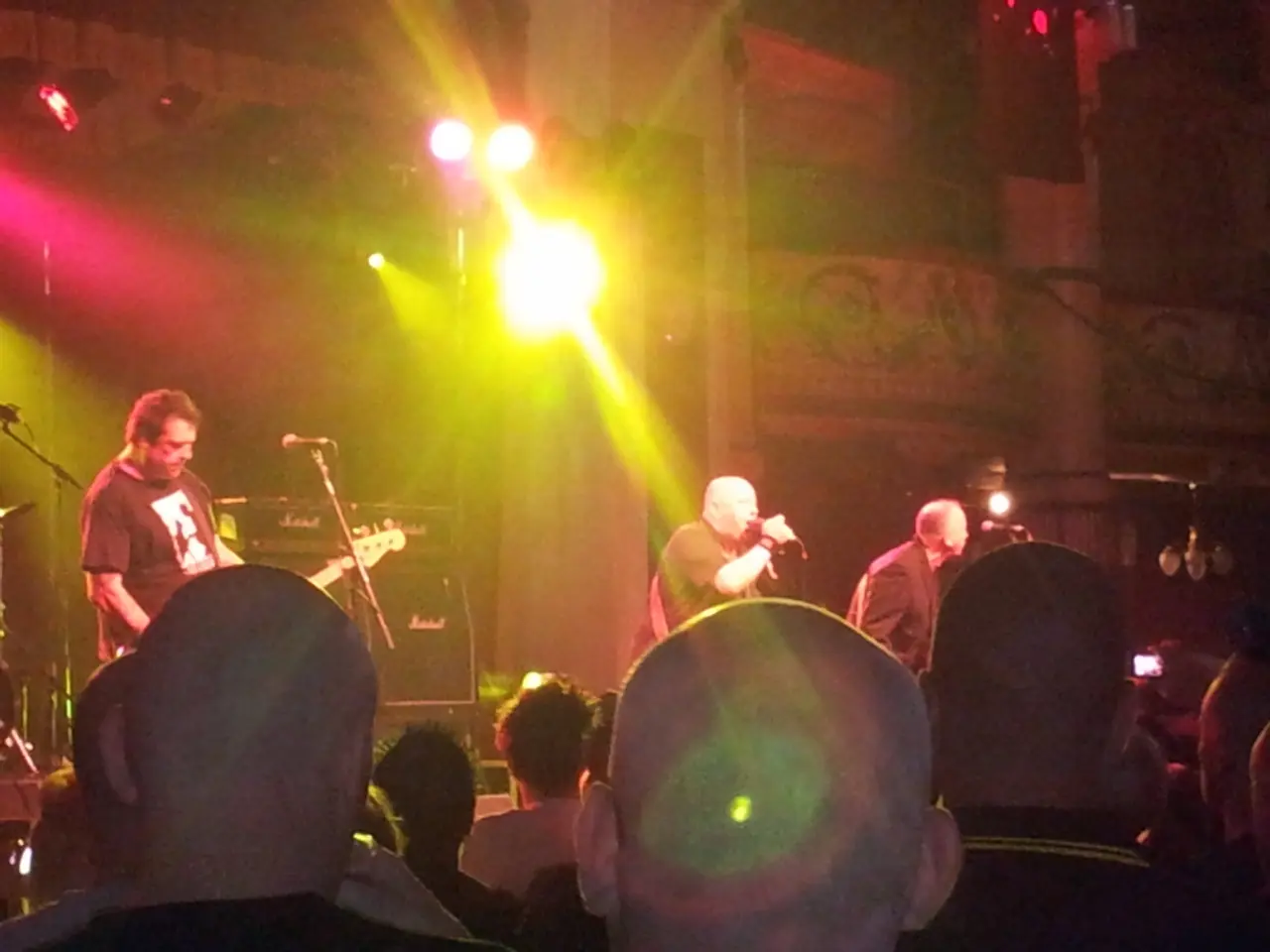Over 330 Metallica live performances revealed creativity's secrets
The Heavy Metal Ethos: Revolutionizing Brand Building and Creative Culture
In the realm of branding and creative culture, the heavy metal ethos has left an indelible mark. This ethos, born from the music genre's emphasis on authenticity, individuality, rebellion, and deep emotional expression, transcends the realm of music and permeates visual aesthetics, fan engagement, and identity formation.
One exemplar of this influence is the author, who has applied the heavy metal ethos to leading creative teams, building brands, and championing a more honest, inclusive creative culture. The author's approach is rooted in freedom, connection, and fearless evolution.
Authenticity and self-expression are key aspects of heavy metal culture. Bands and creators prioritize making art that is personally meaningful and resistant to commercial or external pressures. This sincerity and integrity foster brands built on authenticity rather than mainstream trends or marketing tactics.
The heavy metal ethos also cultivates devoted fanbases, who often express their commitment visibly through tattoos and artwork inspired by metal bands. This emotional bond creates a cultural community with shared values and experiences, which brands can harness to build loyalty.
Darkness and transgression are themes that have influenced creative culture. The raw honesty of heavy metal appeals to niche but deeply engaged audiences, and brand building in heavy metal reflects this by focusing on niche authenticity rather than broad mass appeal.
The DIY attitude and resistance inherent in heavy metal inspire brands to foreground originality and outsider status, which can become powerful differentiators in competitive creative markets.
Heavy metal’s ethos has been adapted globally, influencing festivals, artistic expression, and cultural identities beyond its Western origins. For instance, in Indonesia, metal’s acceptance even crossing into political acceptance illustrates how this ethos shapes cultural branding across diverse contexts, integrating local identity with global heavy metal culture.
Metallica, a band synonymous with the heavy metal ethos, embodies these principles. Their frontman, James Hetfield, often emphasizes that Metallica is a place for all misfits and outcasts. Metallica brings the audience into the experience, creating a visceral connection regardless of the size of the crowd.
Lars Ulrich, Metallica's drummer, took a stance against music piracy and then adapted his principles to the changing world. The author's approach to change is informed by Ulrich's ability to recognize the world's shift and adapt accordingly.
The author's creative philosophy is rooted in freedom, connection, and fearless evolution. This is evident in the author's experience at The Football Association (FA) and Wembley Stadium, where the author aimed to make supporters feel like part of something bigger, influenced by Metallica's immersive style.
During the author's time as global head of creative at innocent, the tone of voice was shaped by the heavy metal ethos, allowing for quiet disruption and challenging category norms. The author encourages finding one's own version of the Snake Pit, a place where one feels most free, fearless, and authentic.
The author's approach to fan experience, influenced by Metallica, is not just about loud and attention-grabbing spectacles. It can also be sharp, clear, and unapologetic, as demonstrated by Metallica's song Leper Messiah.
Through Metallica's charity, All Within My Hands, the author has packed boxes at food banks across the U.S. and met lifelong friends. Metallica shows have taken the author across continents over the last three decades. The author has even experienced being on stage with Metallica at Reading Festival, looking out over 80,000 fans.
The author believes in the power of subculture, seeing it as a superpower that can drive creativity and challenge the status quo. The author emphasizes the importance of lived, human diversity in building teams and creative culture. S&M (1999): Metallica with the San Francisco Symphony is a masterclass in fusion, and Mexico 2024 offers live energy and connection.
In summary, the heavy metal ethos has shaped brand building by prioritizing genuine, uncompromising creative expression and fostering tightly-knit, identity-driven communities that support art as a form of personal and cultural rebellion. This ethos permeates creative culture by encouraging artists and brands to embrace individuality, emotional depth, and authenticity over commercial conformity.
- The author's creative philosophy, rooted in freedom, connection, and fearless evolution, mirrors the heavy metal ethos, which prioritizes authenticity, individuality, and resistance to commercial pressures.
- Heavy metal music's visual aesthetics, often characterized by logo designs, color schemes, and poster art, are deeply influenced by this ethos and serve as a reflection of the band's emotional depth and rebellious spirit.
- Channeling the DIY attitude of heavy metal, brands can foreground originality and outsider status, using UI and UX design principles to create unique, meaningful, and emotionally charged experiences for their fans.
- Inspired by the acceptability of metal in diverse cultural contexts, such as Indonesia, the heavy metal ethos shapes local identity and global branding, demonstrating how emotional bonds and shared values transcend geographical boundaries.
- From music to sports, entertainment, and art, the heavy metal ethos emphasizes emotional connection, creating an immersive experience that encourages fans to feel part of a community, regardless of the medium.
- The author advocates for embracing lived, human diversity in creative culture, seeing it as a tool to challenge the status quo and drive innovation, much like the way heavy metal music continues to push the boundaries of creativity and expression.








